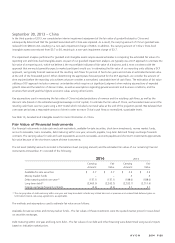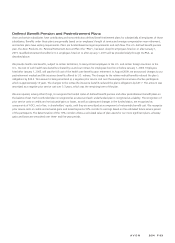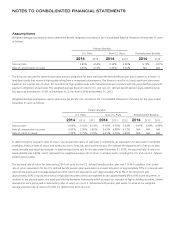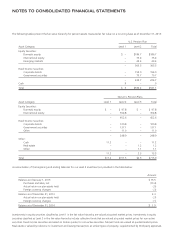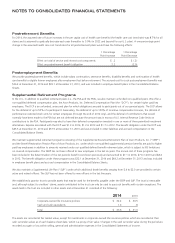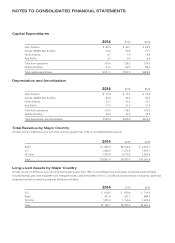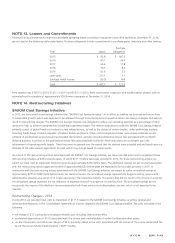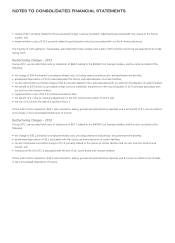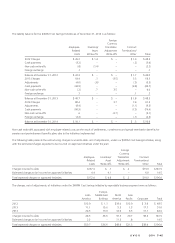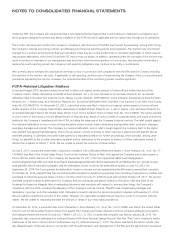Avon 2014 Annual Report Download - page 113
Download and view the complete annual report
Please find page 113 of the 2014 Avon annual report below. You can navigate through the pages in the report by either clicking on the pages listed below, or by using the keyword search tool below to find specific information within the annual report.
Derivative instruments held by our U.S. pension trust are not publicly traded and each derivative contract is specifically negotiated with a
unique financial counterparty. The derivative instruments are valued based upon valuation statements received from the financial
counterparties, which use underlying yield curves or market indices.
The overall objective of the PRA is to provide the means to pay benefits to participants and their beneficiaries in the amounts and at the
times called for by the plan. This is expected to be achieved through the investment of our contributions and other trust assets and by
utilizing investment policies designed to achieve adequate funding over a reasonable period of time.
Beginning in 2014, we have adopted an investment strategy for the PRA which is designed to match the movements in the pension liability
through an increased allocation towards debt securities. In addition, we also have begun to utilize derivative instruments to achieve the
desired market exposures or to hedge certain risks. Derivative instruments may include, but are not limited to, futures, options, swaps or
swaptions. Investment types, including the use of derivatives are based on written guidelines established for each investment manager and
monitored by the plan’s management team. In 2015, similar investment strategies are expected to be implemented in some of our non-U.S.
defined benefit pension plans.
Pension trust assets are invested so as to achieve a return on investment, based on levels of liquidity and investment risk that are prudent
and reasonable as circumstances change from time to time. While we recognize the importance of the preservation of capital, we also
adhere to the theory of capital market pricing which maintains that varying degrees of investment risk should be rewarded with
compensating returns. Consequently, prudent risk-taking is justifiable.
The asset allocation decision includes consideration of the non-investment aspects of the PRA, including future retirements, lump-sum
elections, growth in the number of participants, company contributions, and cash flow. These characteristics of the plan place certain
demands upon the level, risk, and required growth of trust assets. We regularly conduct analyses of the plan’s current and likely future
financial status by forecasting assets, liabilities, benefits and company contributions over time. In so doing, the impact of alternative
investment policies upon the plan’s financial status is measured and an asset mix which balances asset returns and risk is selected.
Our decision with regard to asset mix is reviewed periodically. Asset mix guidelines include target allocations and permissible ranges for each
asset category. Assets are monitored on an ongoing basis and rebalanced as required to maintain an asset mix within the permissible ranges.
The guidelines will change from time to time, based on an ongoing evaluation of the plan’s tolerance of investment risk.
Cash flows
We expect to make contributions in the range of $50 to $55 to our U.S. defined benefit pension and postretirement plans and in the range
of $25 to $30 to our non-U.S. defined benefit pension and postretirement plans during 2015.
Total benefit payments expected to be paid from the plans are as follows:
Pension Benefits
U.S. Plans
Non-U.S.
Plans Total
Postretirement
Benefits
2015 $101.4 $ 38.4 $139.8 $ 8.7
2016 68.4 40.6 109.0 8.6
2017 65.1 41.3 106.4 8.5
2018 51.0 42.7 93.7 8.4
2019 48.8 43.7 92.5 8.2
2020-2024 215.4 236.2 451.6 37.2
A V O N 2014 F-39


